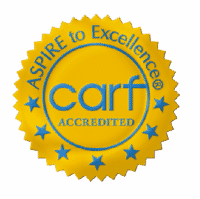
By Trafalgar’s Editorial Team
This Content is Created By Kinga Burjan, M.A., R.P.
Hi, welcome, thank you for joining me on your wellness journey. Today, I’ll be leading you through a body scan meditation. My name is Kinga Burjan and I’m a registered psychotherapist.
So take a moment to find a comfortable seat or feel free to lie on the floor. If you’re sitting in a chair, put both feet flat on the floor. Notice the chair supporting you. To how it supports your legs, your back. And if you’re sitting in a chair, sitting upright spine tall, shoulders relaxed, you can even tuck your chin in slightly so that your head’s not back too far.
And if you’re lying on the floor, you can. Bring the feet a little bit wide apart, letting them fall to the side and you can turn your palms upward and let your arms relax by your side. And you can either look down or close your eyes, whatever feels comfortable for you. If your eyes are open, find a spot to gaze at.
So now bring your awareness to your breath. Notice the natural flow of the inhales and exhales through your nose. Just notice the sensation of the air. The coolness of the air as it enters your nostrils. And as you exhale, noticing the sensation, the warmth of your exhale. Let’s take a few breaths here. Just noticing the natural flow of your breath, without trying to change it.
So now if you’re comfortable to you can close your eyes, if not again, keep your gaze at a spot that feels comfortable for you and bring your awareness to the top of your head. So noticing your skull, your forehand, your eyebrows, Your eyes, your temples, your cheeks, your ears, your nose, your jaw, your tongue.
You can even take a moment to separate your tongue so feel if the tip of the tongue is touching the roof of your mouth, you can bring the tongue down to a lower palate, allowing the jaw on the tongue to relax a little bit more.
Just take a moment to notice how your head, your face, your neck feels. With your exhale, you can give your body permission to relax any area that feels tense. Letting go just a little with each exhale. Now take a moment to notice your shoulders between your shoulder blades, relaxing your jaw and tongue a little bit more. Noticing your chest, your abdomen, your mid-back, your lower back.
And as you inhale allowing your belly to expand, your lungs to fill. And as you exhale, allowing your lungs to relax and your belly to deflate and relaxing the shoulders.
Taking a few breaths, letting your torso, your shoulders, your jaw, your tongue, relax with each exhale. Even if it’s just a tiny bit. Now bring your awareness to your arms, your elbows, your wrists, your hands.
If you notice any tension try your best to let the tension go. Releasing and relaxing. Letting go with your exhales. Now, bring your awareness, to your glutes, your thighs, your knees, your calves, your shins. Just paying attention without judging, just noticing if you might be holding tension. And doing your best to allow those areas to release, to relax, to let go, even if it’s just a tiny bit.
Now bring your awareness to your ankles, to your heels, the tops of your feet, the soles of your feet, your toes. Scanning that area of your body. And again, doing your best to tell your mind, your body, to relax those areas, even if it’s just a teeny tiny bit. So now just let your body be present. Breathing deeply into any areas that feel tense.
You might notice your mind wander, which is completely normal. And when it wanders, just gently bring it back again to your inhales and exhales. Allowing your body to release, to relax, to let go. With each exhale. Letting go a little deeper. With your exhales. Taking a deep inhale. And exhale coming back into the room.
Gently wiggle your fingers, your toes. You can even gently rotate your wrists and ankles in one direction. Then in another direction. Being mindful of the space around you, if it feels good to you, you can even stretch your legs forward and stretch your arms up and back slightly. And letting go with your exhale.
Good, one more deep breath in connecting the body with your breath and exhale. Your eyes are closed, so we open them coming back into the ground. Welcome back. So I encourage you to set the time each day to check in with your breath and your body. If you don’t have time to do this meditation every day, that’s okay. Make a conscious effort to set a time to just tune in.
So whether that’s at the start of a class that you have or at the end of your drive home, just taking a moment to scan your body from your head down to your toes, noticing if there’s any tension and if you notice the tension not judging it.
Being mindful to breathe into those areas and giving it permission to release, to relax, to let go. Thank you for joining me today, and I hope you stay connected with your mind, your body, your breath. See you again soon.






